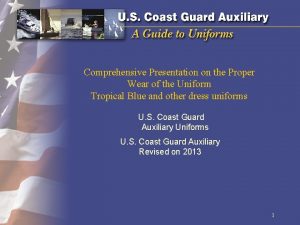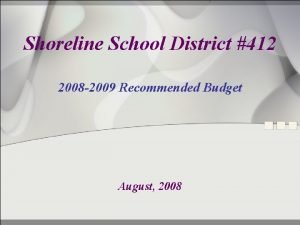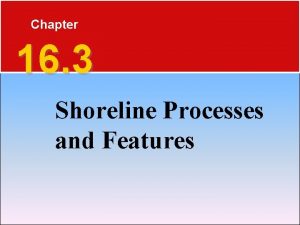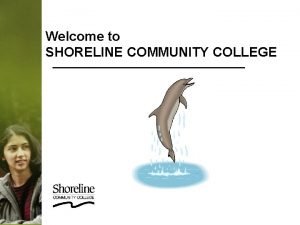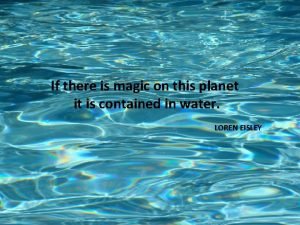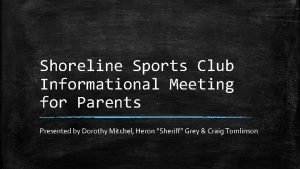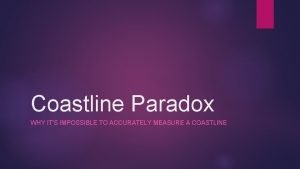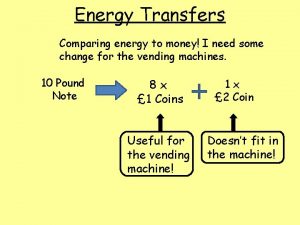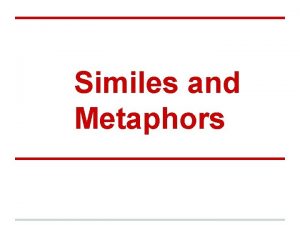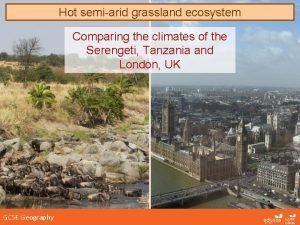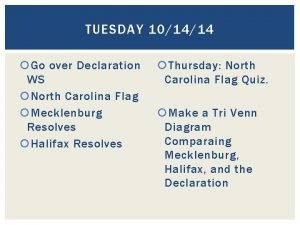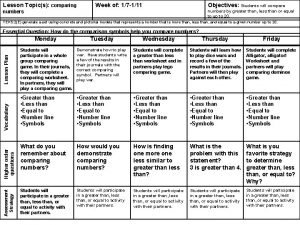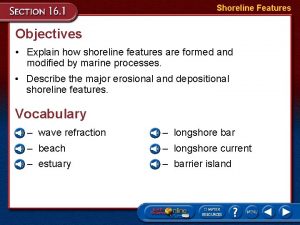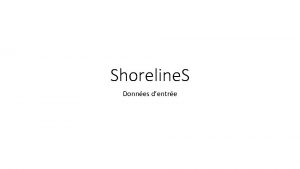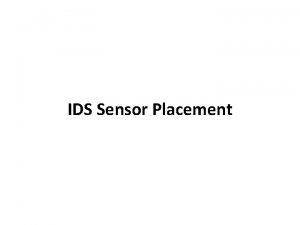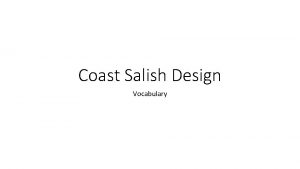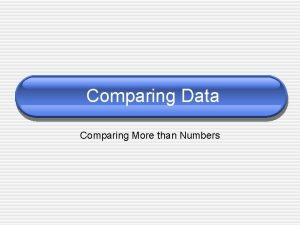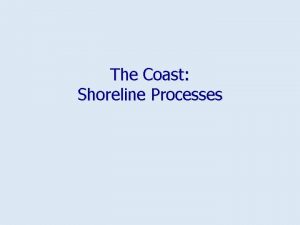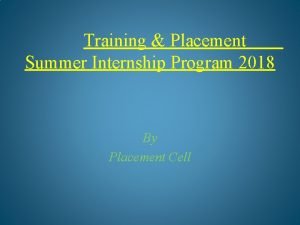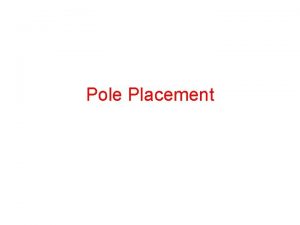STRATEGIC SHORELINE PLACEMENT FROM COAST TO COAST Comparing




















- Slides: 20

STRATEGIC SHORELINE PLACEMENT FROM COAST TO COAST Comparing the Kings Bay Entrance Channel, Florida and Georgia with the Columbia River, Oregon and Washington 255 255 237 237 217 217 200 200 0 163 163 131 132 122 239 65 53 80 119 27 252 174. 59 83 36 118 110 135 120 112 92 56 62 102 130 J. D. Ousley Dredging Contracts Specialist USACE - Portland District 20 Sep 2017 1 102 56 48 130 120 111

AGENDA • • • Columbia River project, Oregon and Washington King’s Bay project, Florida and Georgia General Comparisons Share some general (and interesting) observations Conclusions Photo: Mark Turney/U. S. Navy 2

DEFINITIONS Coastal Engineering – processes ongoing at the shoreline and construction in the coastal zone often directed at combating erosion of coasts or providing navigation access. River Engineering – design and construction of various structures to improve and/or restore rivers for both human and environmental needs. Both deal with the interaction of water and sediment Regional Sediment Management – a systems approach to deliberately manage sediments in a manner that maximizes natural and economic efficiencies to contribute to sustainable water resource projects, environments, and communities. 3

COLUMBIA AND LOWER WILLAMETTE RIVERS (C&LW) • Least cost option • Minimize return of sediment to the navigation channel • Maintain engineering function of river structures • Create habitat/prevent breaching and wash out of marsh 4

KINGS BAY ENTRANCE AND INNER CHANNEL (KBEC/KBIC) • Keep sediment in the active system • Reduce nourishment intervals of the Federal Shore Protection Project • Mitigate down drift impacts of the inlet • Protect historical sites • Create habitat 5

GENERAL COMPARISONS Columbia River Kings Bay Dredging Depth with advanced maintenance -48 feet -49 feet Average Tidal Ranges 6. 5 feet (lower river) 8 feet Average annual dredge volumes *350, 000 to 500, 000 cubic yards 50, 000 to 400, 000 cubic yards Flow/transport Bi-modal, predominately down river Bi-modal in the inlet, Southward from GA to FL *per location, C&LW 6 -8 Mcy/year 6

BERM AND SHORE SLOPES NW: 20’+ elev, flat berms, 1 v: 5 h foreshore SE: 13’ elev, 1 v: 15 h berms to 1 v: 25 h foreshore 7

SEDIMENT COMPOSITION Mean grain sizes range from 0. 20 to 0. 50 mm NW: volcaniclastics, pumice, quartz and oxides SE: quartz and carbonates 8

CONSTRUCTION METHOD NW: Pipeline, Dredge OREGON SE: Pipeline or Hopper with pump-out 9 Photo: Port of Portland Photo: Hodgens and Neves, 2015

HABITAT CREATION Photo: Port of Portland Photo: Amelia Island e-Magazine 10 Photo: J. Engle, USACE - SAJ

POST-CONSTRUCTION CONSIDERATIONS NW: Dissuasion mounds SE: scarping, tilling, sandboni 11

GENERAL OBSERVATION West Coast: • tend to riverine structures – pile dikes • water focused system management East Coast: • tend to coastal structures – groins • sediment focused system management 12

WATER FOCUSED SYSTEM MANAGEMENT Pile Dikes: • improve alignment • reduce x-sectional area • increase velocity in channel • stabilize sand 13

NW PILE DIKE ATTACHMENT 14

SE CONSIDERATION • Series of T-head groins and beach fill • The shoreline is relatively stable, the depths within the adjacent inlet growing steeper and threatening the foundation of the groins. • Want to deflect water flow away from groin Photo: Olsen and Associates, 2004 15

SEDIMENT FOCUSED SYSTEM MANAGEMENT Groins: • maintain minimum dry beach width • control the amount of sand movement • anchor the beach as a terminal structure for the littoral cell Photo: southernfriedscience. com Image: nccoast. org 16

SE TERMINAL GROIN • Reduce end losses • Recapture over 150 acres of park • Reduce winter flooding of the maritime forest • Create shorebird and turtle nesting habitat • Increase recreation 17

NW CONSIDERATION • Terminal groin or tighten the dike to become impermeable out some distance • Force sediment by-passing further into river to prevent shoaling 18

CONCLUSION It is perhaps not intuitive to apply coastal or riverine engineering practices across the disciplines, but… Fundamental approach: • sediment control or water control • addressing systematic issues like scouring or shoaling • Affords us a much larger toolbox 19

REFERENCES Beeman, O. 2011. Columbia River Reflections, A Memoir by Ogden Beeman, The Port of Portland. P. 73. Hickson, R. E. , 1961. Columbia River Ship Channel Improvement and Maintenance. Journal of the Waterways and Harbors Division, Amer. Soc. of Civil Eng. p 71 -93. Hodges, K. and Neves, M. 2015. Northeast Florida Regional Sediment Management, Implementation Strategies and Recommendations for Nassau County and Duval County, Florida. USACE Jacksonville District. P. 64. Howard, S. C. , and Olsen, E. J. , 2004. Cumberland Shoals Dredging Feasibility Study. University of Delaware, Center for Applied Coastal Research, accessed 6/13/2017: http: //www. coastal. udel. edu/coastal/whatis. html USACE. 2002. Coastal Engineering Manual. EM 1110 -2 -1100. http: //www. nccoast. org/wp-content/uploads/2014/12/TG 1. png http: //www. dredgingtoday. com/wp-content/uploads/2014/12/Terminal-Groin-to-Get-Another-Look. jpg 20
 Coast guard trops collar device placement
Coast guard trops collar device placement Shoreline school district 412
Shoreline school district 412 Shoreline features diagram
Shoreline features diagram Swedish primary care shoreline
Swedish primary care shoreline Shoreline cc intranet
Shoreline cc intranet The zone near the shoreline in a lake is known as the
The zone near the shoreline in a lake is known as the Shoreline community college nursing
Shoreline community college nursing Shoreline sports club
Shoreline sports club What is coastline paradox
What is coastline paradox Strategic competitiveness
Strategic competitiveness Strategy analysis and choice largely involves making
Strategy analysis and choice largely involves making Strategic fit vs strategic intent
Strategic fit vs strategic intent Strategic complements example
Strategic complements example Make an analogy comparing energy and money
Make an analogy comparing energy and money With your words like knives and swords figurative language
With your words like knives and swords figurative language Temperate grassland climate graph
Temperate grassland climate graph Comparing sw asian governments
Comparing sw asian governments Comparing declarations venn diagram
Comparing declarations venn diagram Chapter 22 comparing two proportions
Chapter 22 comparing two proportions Comparing numbers objectives
Comparing numbers objectives Comparing economic systems worksheet
Comparing economic systems worksheet
